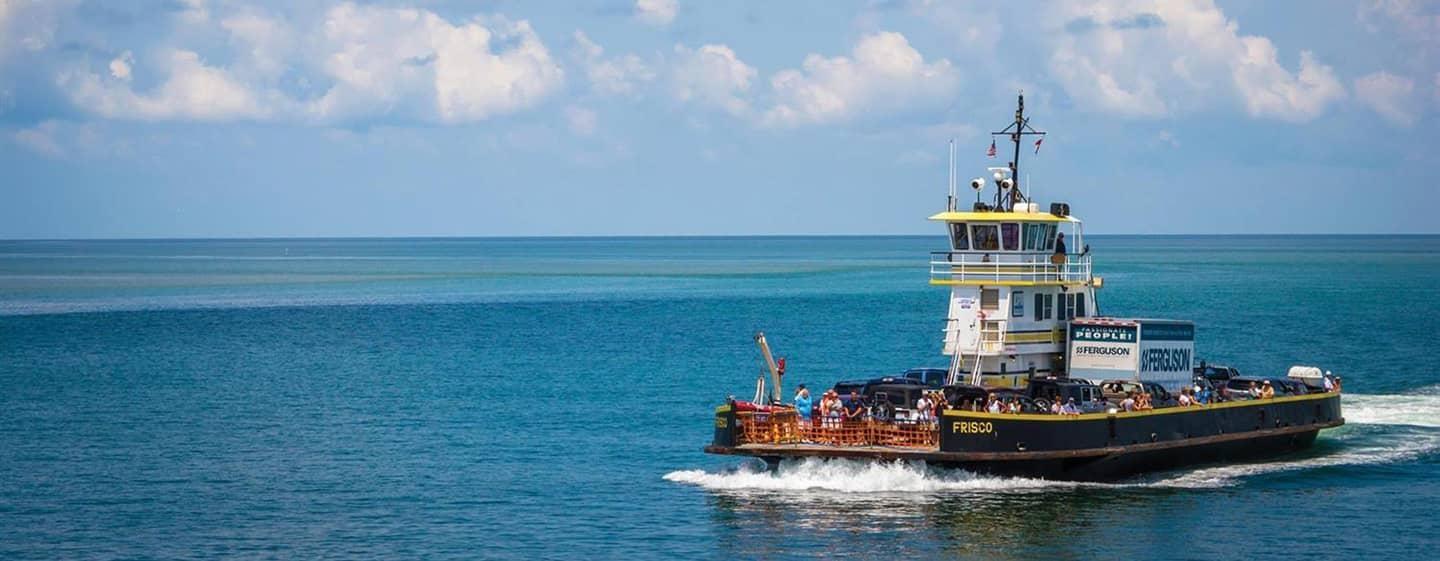NC's Ferry System Explores Going Electric


Connecting North Carolina’s Inner Banks with its far-reaching Outer Banks has been a challenge for centuries.
Early attempts at creating a ferry service aimed to connect settlers and farmers with the region’s agriculture-based economy.
That all changed in 1947 when the North Carolina Ferry System was created. By then, residents and local businesses were looking to make their living on the coast, and visitors were hoping to make travel to their favorite destinations easier.
Today, the North Carolina Department of Transportation (NCDOT) operates 21 ferries on seven routes across the Currituck and Pamlico sounds as well as the Cape Fear, Neuse and Pamlico rivers. Two of those routes—from Hatteras to Ocracoke and Ocracoke to Cedar Island—are officially part of the Outer Banks National Scenic Byway. A report for NCDOT by the Institute for Transportation Research and Education at NC State found the system moved 800,000 vehicles and roughly two million passengers in 2020. The system made an economic impact of about $735M.
But times are changing. The Ferry Division, which oversees the ferry system, has launched two studies looking at how to keep the system moving while powering it with something other than diesel fuel.
In one study, Western Carolina University is researching how the ferry system could electrify its short-haul routes. Most of its crossings are short routes, which use smaller boats.
“The electrification of ferry fleets is underway, especially in Europe,” said Catherine Peele, NCDOT’s Ferry Division Planning and Development manager. “But electric ferries are also in use here. We’re talking with the operators of ferry service in British Columbia and the folks who run the Maid of the Mist sightseeing boat at Niagara Falls.”
In 2021, Peele told coastalreview.org the initial findings show that while operators are moving toward electric, it’s not a situation where one size fits all.
“It depends on your boat, what you’re carrying, how many people or cars you’re carrying, how long that trip is,” adds Peele.
In the second study, the Ferry Division and the Coastal Studies Institute are looking at how best to power long-haul ferries as well as a reliable delivery of new energy sources.
The study is part of the federal government’s Energy Transitions Initiative Partnership Project, which works with remote and island communities that, as the project’s website says, seek to “transform their energy systems and increase energy resilience” and prioritize “access to resilient, affordable, sustainable, and clean energy resources.”
“Our study about powering ferry service could also be applied to powering Ocracoke Island, perhaps by installing a microgrid,” said George Bonner, Director of Renewable Ocean Energy at the Institute.
That means looking at more than just how to recharge a battery using solar, wind or wave power. It’s a comprehensive look at a more reliable way to not only store but also deliver energy. A microgrid for Ocracoke Island would likely use wind and solar power to help make the island self-sustaining for its energy needs.
While a variety of possibilities are being considered, for now electric motors and batteries appear to be the most likely option to power the entire ferry system.
“You would likely need to have more capacity for the longer runs such as Ocracoke and Hatteras, but then you need to look at the best ways to recharge the battery,” said Bonner. “Does that mean recharging the battery while onboard or whether batteries are replaced between trips. You could have battery systems you roll on and off, so you don’t have to transfer power from the shore to the boat.”
It’s still too early to know what the ferry system’s diesel-to-electric conversion will look like, when it will happen or what it will cost, but it’s clear the vital transportation service is sailing toward a cleaner future.